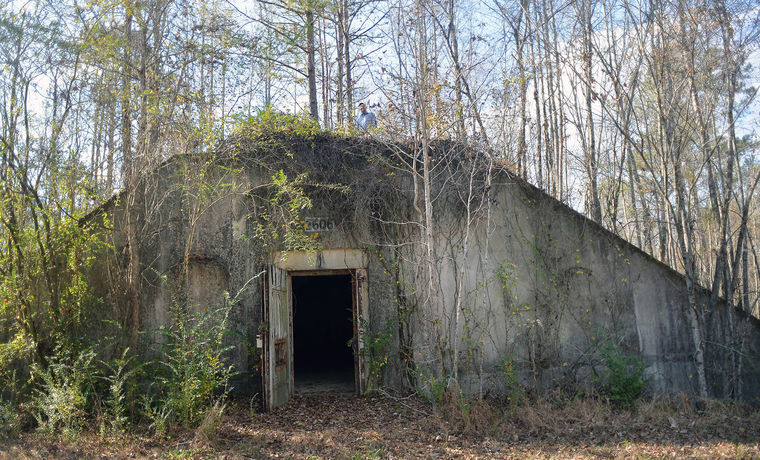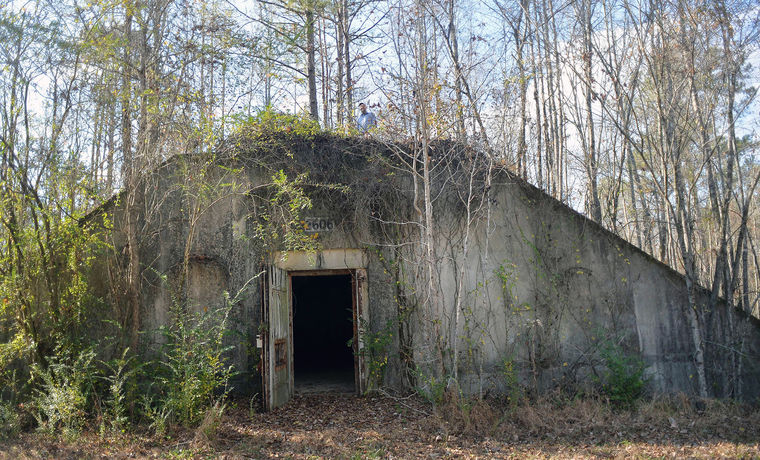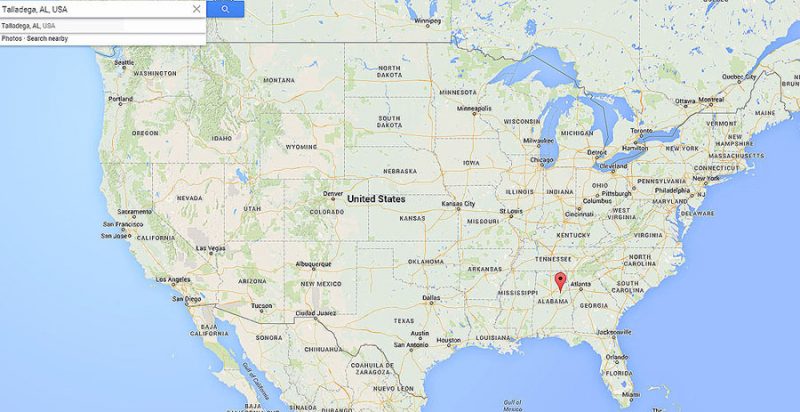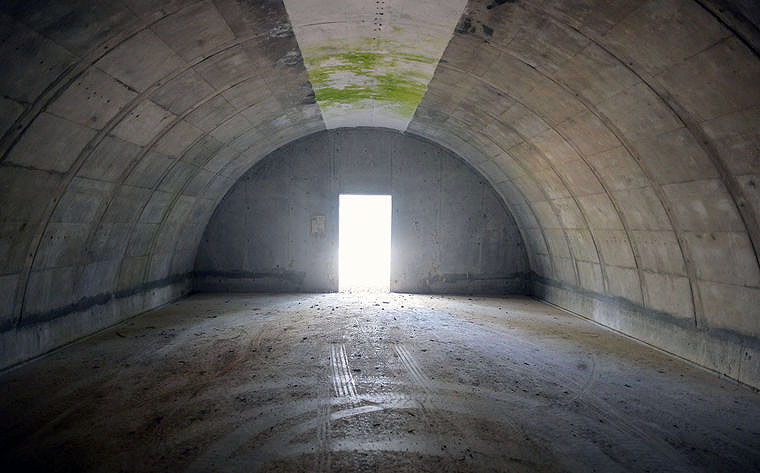Image used: WWII military ammo bunkers in Talladega County
American culture was heavily influenced and changed by WWII and its aftermath. The scenario was no different in Alabama. After the great depression of the 1930s, Alabama had already begun its recovery. The war also brought extensive industrial growth, new job opportunities for African Americans and women and there were sudden population shifts to Alabama. Industrial development related to WWII demands brought a significant level of prosperity to the State. Over 89,000 people moved into Alabama to work for war related manufacturing industries and services.
Image used: Map showing location of Talladega County in Alabama, United States. Courtesy- Google Maps
During the WWI and WWII, Alabama was favored by US authorities for US military bases, due to cheap land and a good climate. Fort McClellan was established in Anniston city in Calhoun County, Alabama in 1917. Before the US entry into the WWII, an ammunition storage site called Anniston Army Depot was constructed in foothills of Appalachian Mountains. US Army acquired 10,640 acres land near Anniston in 1940. The construction of 500 ammunition storages, administration buildings and warehouses started in February, 1941. The igloos were concrete structures mounded over with dirt to facilitate concealment and contain accidental explosions.
The name of the facility was given ‘the Anniston Ordnance Depot’ on October 14, 1941 with just 4 stuffs running it. After the Japanese attack on Pearl Harbor in December 1941 and US entry into the WWII, the depot became very important. US Army increased the land area of the depot to over 15,000 acres by November 1942. 4,000 civilians were working in the facility to receive, to process and to ship millions of tons of ammo for United States and the Allied forces of the WWII. Chrysler Corporation managed the depot from 1943 to 1945. A small number of Army personnel oversaw the works of the civilians at the facility. Elsewhere in Alabama, an artillery powder packaging plant was established near Talladega.
Online edition of regional daily newspaper The Anniston Star, serving Anniston, Alabama and six surrounding counties, reported on the Talladega County’s WWII Empty Arsenals.
Remnants of 136 WWII ammunition storage or ‘igloos’ lie between south of Oxford and northern border of Talladega. Today the WWII Anniston Army Depot has become obscured by piney woods. They are quite eerie, dark, cold, empty and musty.
A 2,836 acre facility here today is managed by the Public Park Authority of the cities Talladega and Lincoln. It’s a ‘Coosa River Storage Annex‘ being used as an outdoor playground called ‘Top Trails’ and opened in 2012. The park’s only full time employee, Wes Pope, 55, said that he had grown up in Talladega but hadn’t even known about the place.
Earthen trails criss-cross the WWII military complex. Its mazes of asphalt roads lead visitors to the empty arsenal igloos. Top Trails mostly attracts the hikers, motorcyclists, ATV riders and fishermen and in February, 2014, it received a development grant of $325,000.
Anniston’s Fort McClellan was redeveloped by demolishing old buildings and building new ones. However, there hasn’t been any reconstruction of the Top Trails Park since the military closure. The reinforced concrete of the igloos hasn’t deteriorated much in 70 years. But the bushes and weeds covered their entrances. Pine tree branches covered their roofs. Cement floors have cracks everywhere and graffiti is common inside the igloos.
Image used: The reinforced concrete of the igloos hasn’t deteriorated much in 70 years
During WWII it was the Coosa River Ordnance Plant, owned by US Government and operated by Brecon Loading Co. Brecon used to bring gun powders and chemicals from an Army Ammunition plant in Childersburg and to load those into containers.
A US Army Engineering Corps reported in 1992 that there had been containerized explosives, rockets, mortar rounds, propellants and non-explosive bomb parts stored at the Coosa Annex from 1947 to 1982. It was believed by many that Army had also been storing chemical weapons, liquid propellants and radiological materials in the facility. The Alabama National Guard also used the annex as a training site for few years. The igloos are as durable today as they were when built in 1943.
Standard igloos are 30 feet across, 90 feet long and their ceiling is 17 feet high. Some igloos have a shorter length of 60 feet. 16 dos and don’ts are listed on a 1959 safety placard. One of the instructions forbids to smoke or to bring matches into the magazine. The eight layer thick doors of the igloos are also interesting with 4 layers of wood and 4 layers of metal. Pope said that each door weighs 700 pound. The doors are now rusted; look quite old and some are immovable.
A few igloos have built-in small animal cages. Animals were used to check if there had been any leaking chemical munitions. The poor creatures would have shown symptoms of sickness if there was any chemical contamination in the igloos. The environment inside the igloos is like that inside a very damp and dark parking garage. As all the igloos and the Coosa annex roads amid pine trees look more or less the same, it is wise to move around there with a map to avoid getting lost.
Video Used: WWII ammunition storage or igloos



